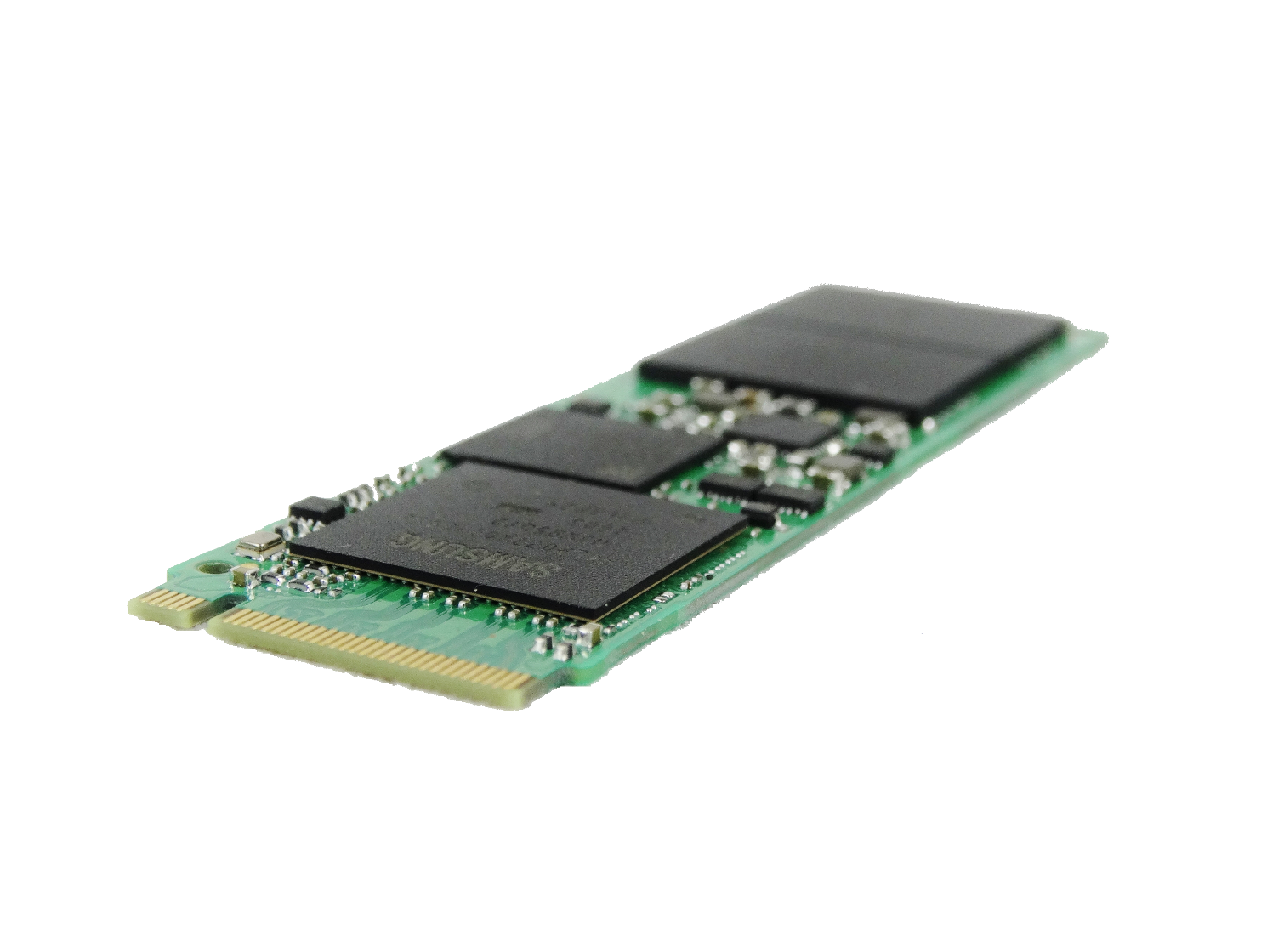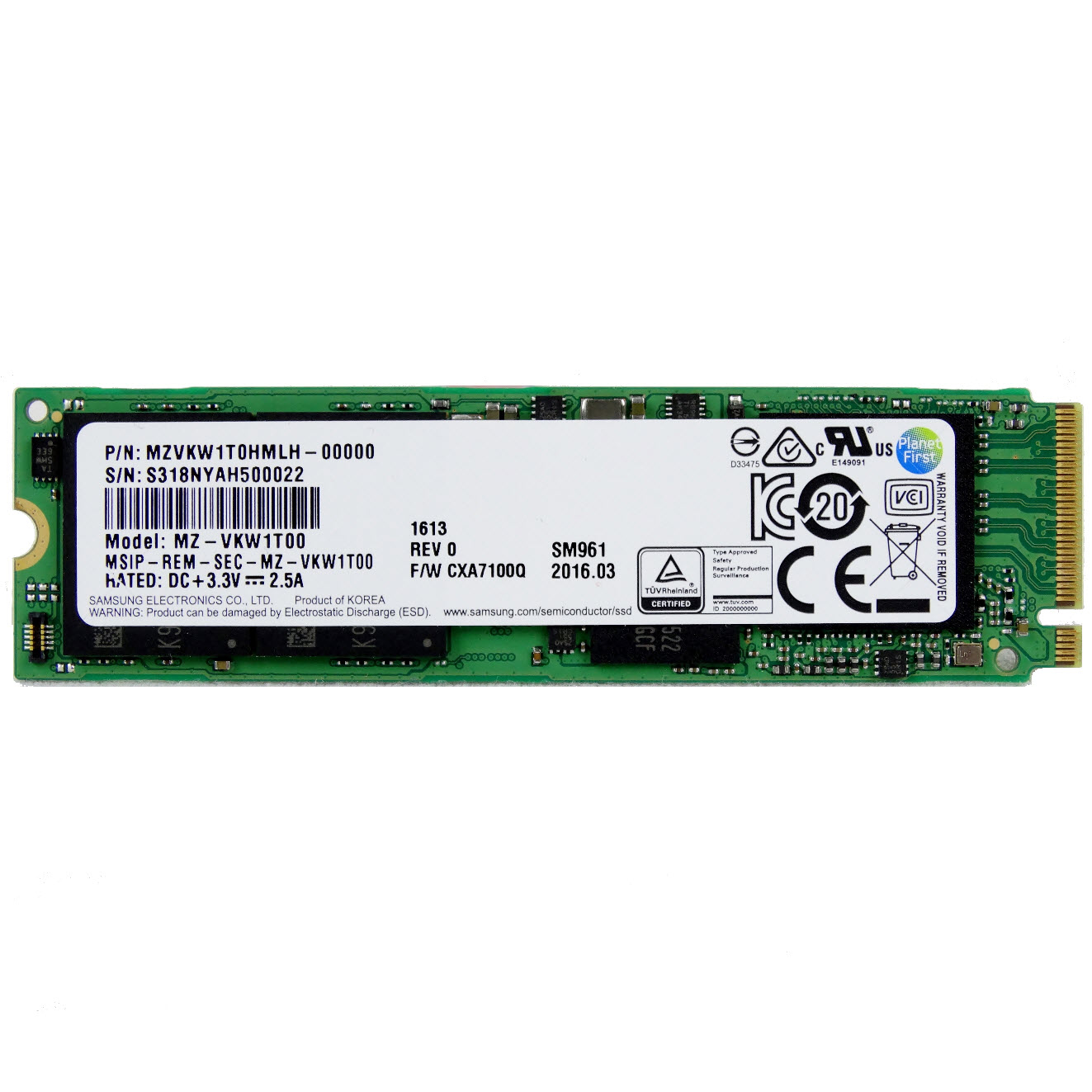Early Verdict
If I were to buy a new SSD for my notebook or desktop, it would be the SM961. I can't give any greater praise than that. The drive leads the high-performance NVMe race in the price to capacity ratio and delivers the performance goods, too. The only real issue is waiting for stock to replenish. Get in line early if you want excellent NVMe performance at 50 cents per gigabyte.
Pros
- +
Highest NVMe performance for a consumer SSD in Four-Corner Tests • Excellent price per gigabyte • Good notebook battery life with excellent performance • Only a slight thermal throttle drop-off under heavy load
Cons
- -
Availability • Additional optimizations needed to increase light workload performance • No support for Samsung's Magician • Intel RST issues in RAID 0 on Z170 (Intel's Fault)
Why you can trust Tom's Hardware
Specifications, Pricing, Warranty And Accessories
Samsung informed the media last year that the 950 Pro would receive a capacity increase via its 3rd generation 48-layer MLC V-NAND. We believed the update would come last January, but CES came and went without a new 950 Pro. In the meantime, Samsung released the T3 Portable SSD and updated the larger capacity 850 EVO products with 48-layer TLC V-NAND, but the company remained silent about its MLC-based products. Now we know why.
Samsung's SSI group recently started shipping the successor to the SM951 NVMe SSD (the 950 Pro's OEM-equivalent) that captured our hearts in 2015. The OEM-specific SM961 features a new Polaris SSD controller and gets a NAND flash upgrade, as well. We currently know very little about the controller, but we should learn more in the coming weeks. The SM951 shipped with Samsung's planar (2D) MLC flash and suffered an endurance disadvantage in comparison to the retail 950 Pro NVMe SSD, but that changes in this round because the SM961 shifts to the newest high-endurance 3D V-NAND that Samsung has to offer.
As mentioned, the SM961 is an OEM product. We first spotted what could have been the drive on Lenovo's website last month. We keep an eye on two Lenovo notebook models, and suddenly the company offered storage upgrades under the generic name of 1TB SSD PCIe-NVMe. We inquired with Lenovo, but could not verify the mystery SSD. We know that Lenovo and Samsung have a close relationship, but the timing also fell in line with the Toshiba XG3 1TB release. We were poised to purchase a new X1 Carbon Gen 4 with the upgraded SSD option to investigate, but in the interim, we were informed that a pair of SM961s were on the way.
Technical Specifications
Samsung released the SM961 in four capacity sizes that range from 128GB to 1024GB (1TB). RamCity, our partner for this review, only plans to carry the three largest capacity sizes. We tried, but failed, to secure a data sheet for this series. The United States division of Samsung Semiconductor does not have the data sheet or many details about the SM961 series, so the performance specifications (above) come from an event that Samsung held last March in Japan. Samsung didn't divulge too many details at the event, but enough information leaked for us to build a chart.
Samsung’s new SSD controller, codenamed Polaris, is at the heart of the SM961. Some outlets have reported that the Polaris controller features five cores, but Samsung has not confirmed the core count. According to Samsung's specifications, the SM961 offers significantly more performance in comparison to the 950 Pro retail NVMe SSD, so the controller has either more processing power by way of cores, clock speed, or both.
The SM961 is the first product to ship with Samsung's new 48-layer multi-level cell (MLC) V-NAND. In the past, MLC density lagged behind TLC, but the two achieve parity at 256Gbit for the first time with Samsung's 3rd generation V-NAND. Unfortunately, without a basic datasheet we do not know the endurance rating for the new OEM series.
The SM961 sports very high performance ratings; the 1TB model clocks in at 3,200 MB/s read and 1,800 MB/s sequential write speed, which eclipses every other retail NVMe SSD. In our testing, we surpassed Samsung's 3,200 MB/s sequential read performance using a corner case test. The drive is capable of delivering up to 3,500 MB/s under ideal conditions, with the right software, when the stars align and the moon is full. The result is the highest we ever expect to achieve with a PCIe 3.0 x4 SSD.
Get Tom's Hardware's best news and in-depth reviews, straight to your inbox.
Samsung spec’d random performance at 450,000 read and 320,000 write IOPS. There are a few snippets from a leaked datasheet, more specifically an image, that suggest the SM961 1TB provides up to 400,000 random write IOPS. We chose to publish the more realistic 320,000 IOPS. Samsung stated the specification in March and it has been verified through pictures published from the event. The Intel SSD 750 1.2TB offers an extra 10,000 random read IOPS, but it trails the SM961 in random write performance by 40,000 IOPS. That puts the SM961 squarely in the performance lead, but you shouldn't expect to reach the high performance numbers under real-world use in your desktop or notebook.
AHCI, the underlying protocol for SATA, only supports one queue with 32 commands. SSD vendors generally test AHCI products with 32 commands and one worker to generate performance specifications. NVMe takes us back to the wild-wild west, and in contrast, it accepts up to 64,000 queues with up to 64,000 commands each. The SSD manufacturers test NVMe SSDs in their labs with multiple workers, and each worker issues multiple outstanding I/O requests. Some companies have tested with 4 workers with a queue depth of 4 per worker (16 Outstanding IO). Other companies search for the highest performance from several worker/queue depth combinations and simply report the best results. Unfortunately, you will not reach 450,000 IOPS under normal consumer workloads until Microsoft develops a file system that operates in a more efficient manner. It is possible to test products under artificial conditions, but we do not change our testing strategy just to highlight hero numbers with NVMe products.
We gave RAID 0 a shot with two Samsung SM961 SSDs, but quickly learned why OCZ put the brakes on users running the RD400 in a similar configuration. We encountered serious stability issues on an Intel Z170 chipset with two SM961 SSDs configured in RAID 0. With the array enabled, the system would blue screen within 45 seconds of booting and restart after a system dump. The issue seems to revolve around the Intel RST NVMe RAID driver, and OCZ found the driver issue to be so pronounced and problematic that the RD400 NVMe SSD shipped with a strong warning label on the retail package. We didn't get a lot of time to look deeper into the issue with only 45 seconds to investigate before a system initiated restart. We did spend a solid six hours debugging every other component in the test system to eliminate our hardware as the cause.
Samsung never released the 950 Pro at the 1TB capacity point, and we currently only have two SM961 1TB SSDs. We can do a more apples-to-apples comparison of the SM961 and the 950 Pro when the two other capacity sizes reach RamCity's headquarters in mid-July. Samsung indicates that a 48-layer V-NAND package should lower power consumption by 40 percent in comparison to the 2nd generation 32-layer V-NAND package. The power savings comes from using half the die to achieve the same density, and when we have comparable capacity points we can put those claims to the test.
Pricing, Warranty, And Accessories
RamCity will offer the SM961 in 256GB, 512GB and 1TB capacity sizes. The 256GB sells for $159, the 512GB for $280 and the 1TB model we're testing today retails for $512, which is very reasonable pricing for this series. All three SM961 capacity sizes are available for preorder. The website defaults to Australian Dollars (AUD) with a 10 percent VAT. You can select your local currency at checkout, which removes the VAT and adjusts for the currency exchange rate. The AUD is currently valued lower than the mighty US Dollar, which strongly favors US buyers.
We've ordered products from RamCity dating back to the Samsung XP941 PCIe SSD. All of our shipments have arrived in three to four days (depending upon the time we placed the order). That is faster than ordering from Newegg in California and having the package delivered to my office in Indiana.
RamCity has offered several Samsung SSI products over the years, and it has built a worldwide customer base. The SM961 ships with a 3-year warranty from the company. RamCity is currently sold out of the SM961 in all three capacity sizes, but you can place a preorder and your drive will ship when new SSDs arrive. RamCity is transparent with delivery times, and the company has a regularly updated estimated arrival date listed for each capacity size on the order page.
A Closer Look
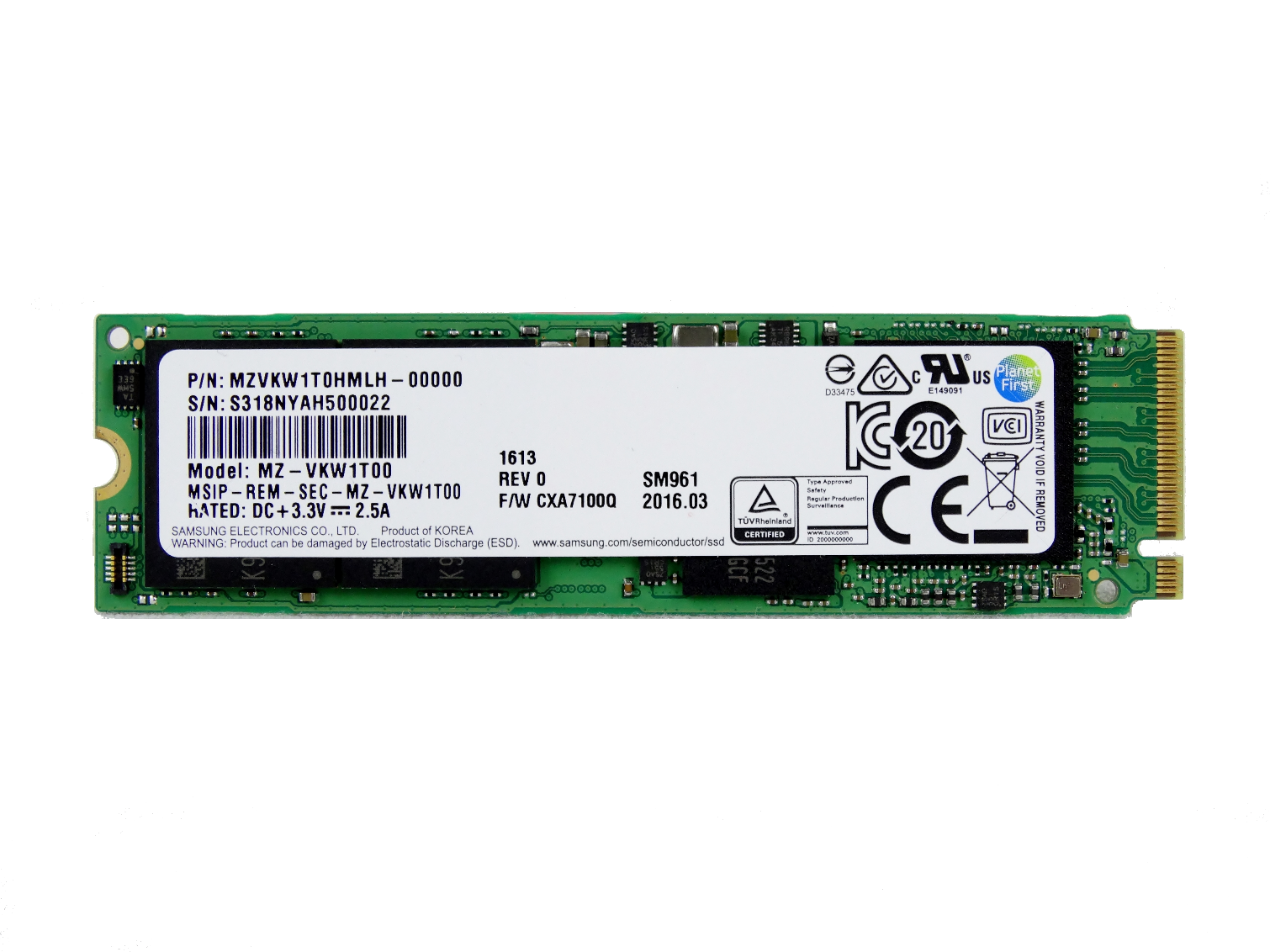
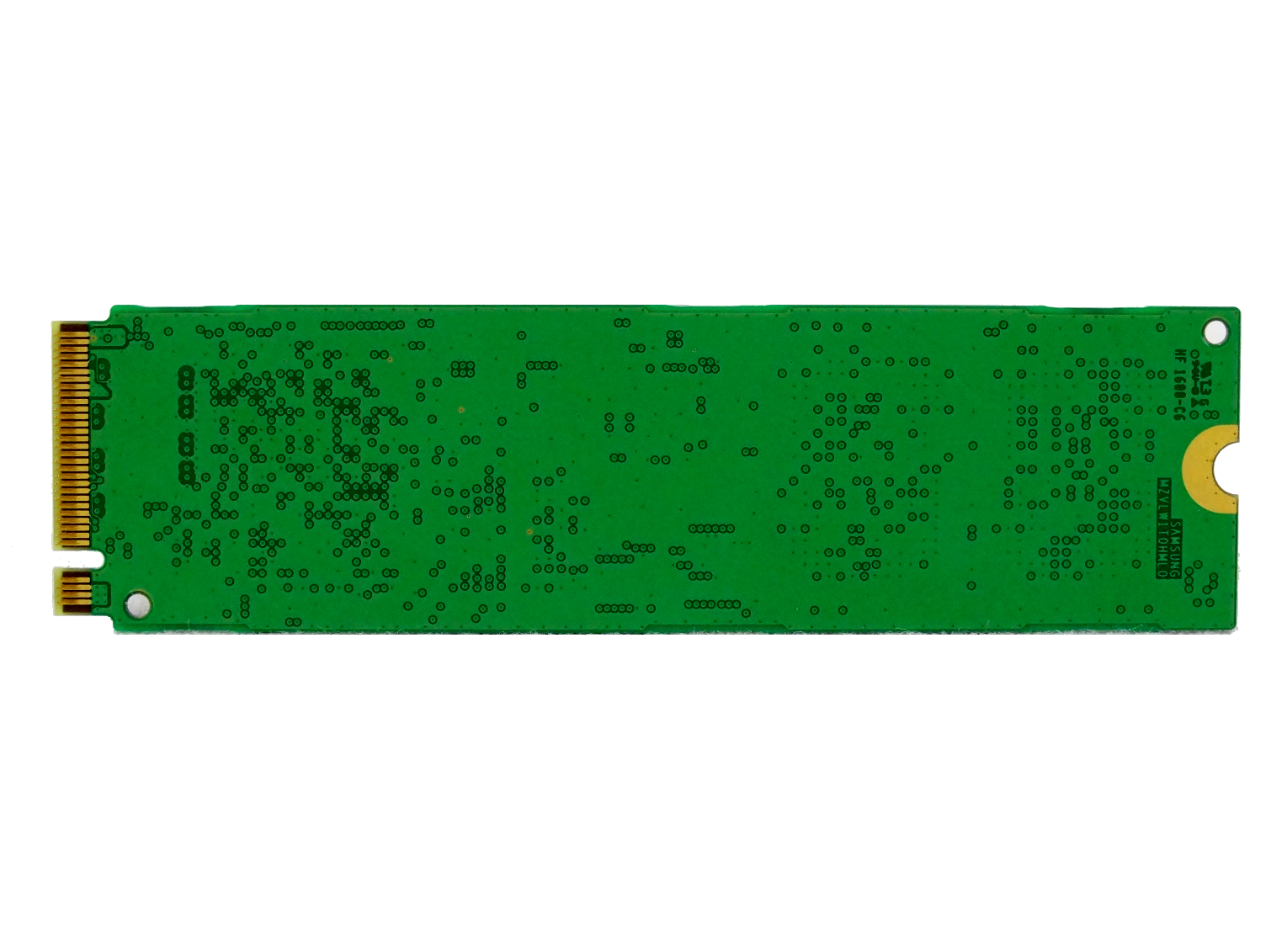
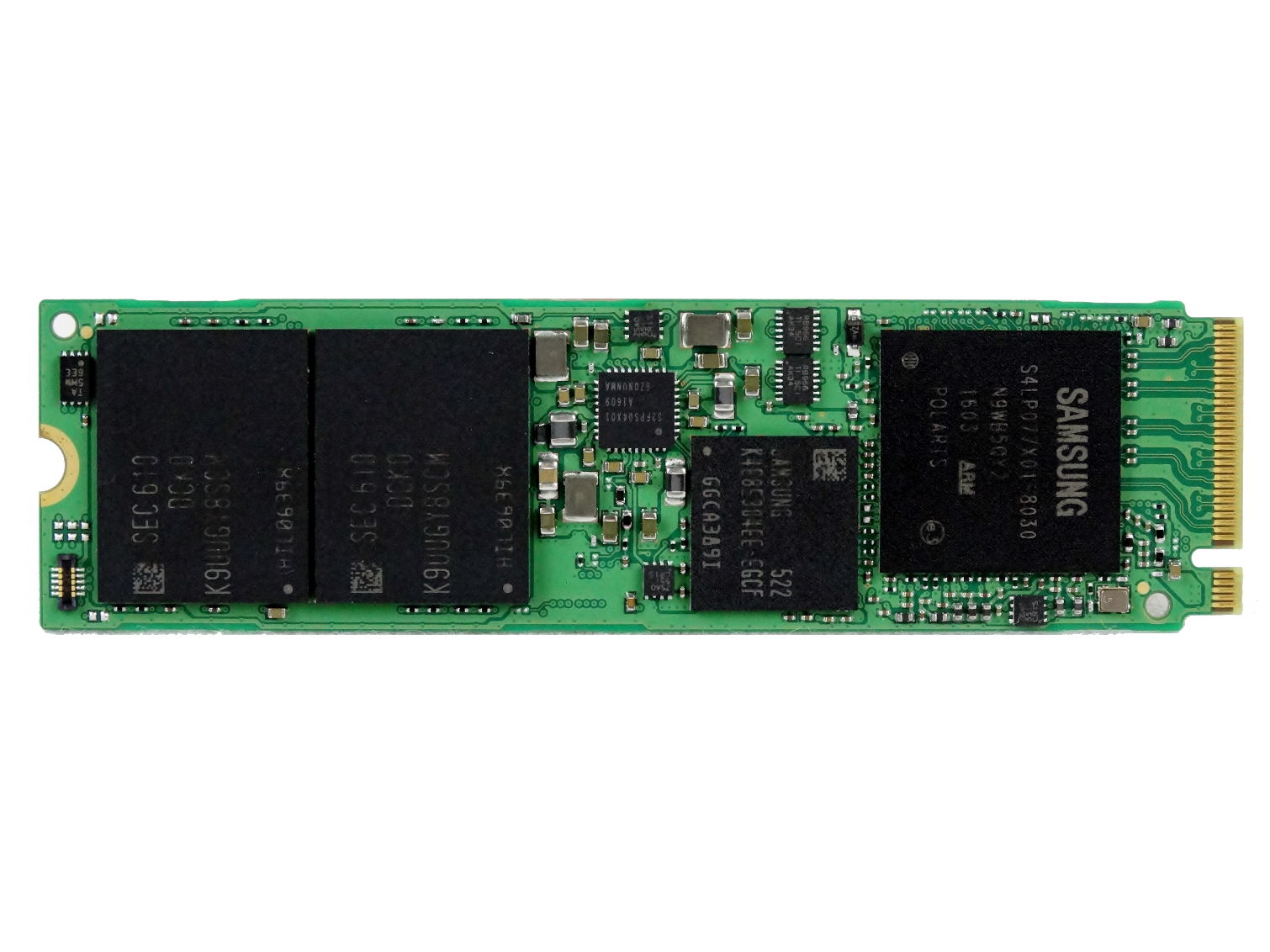
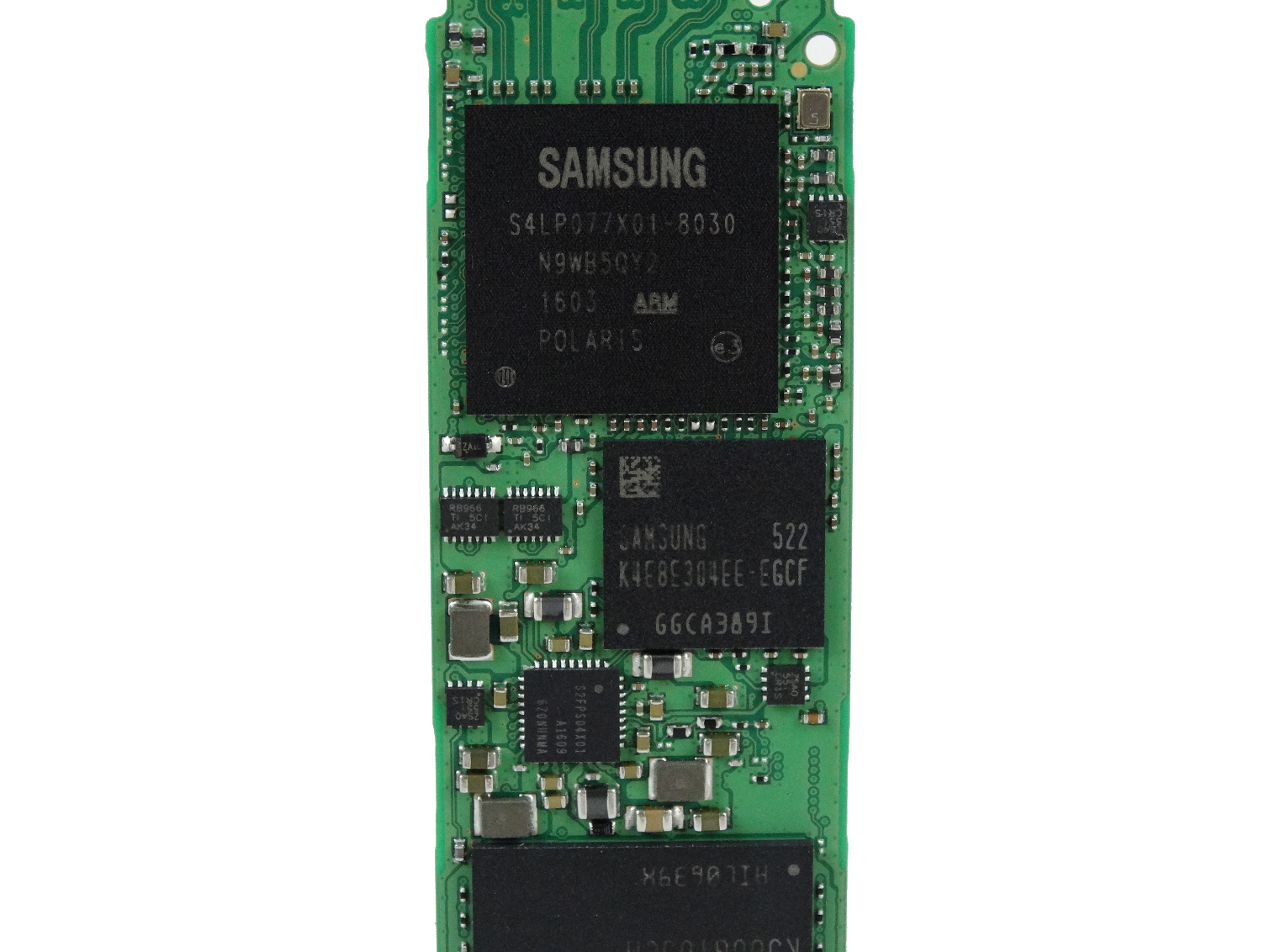
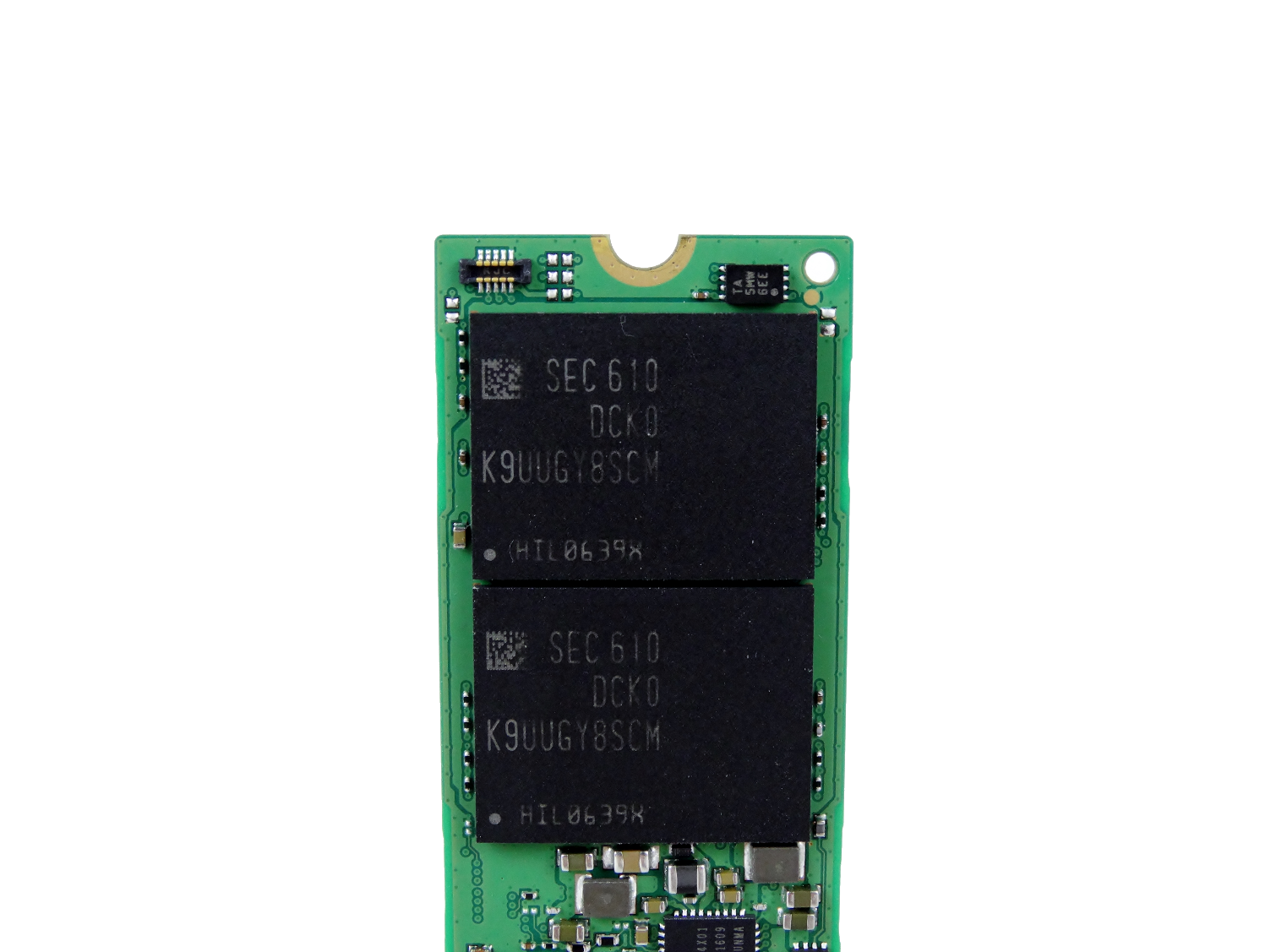
Surprisingly, Samsung reached the 1TB capacity size with just two NAND packages. This is our first look at 256Gbit MLC die in any product and the impressive density made a good first impression.
The increased die density allowed Samsung to design this product with all of the components on one side, which the M.2 specification refers to as single-sided. It almost sounds trivial, but some new notebooks use a specific M.2 connector that is roughly a millimeter closer to the system motherboard. We've also seen notebooks with components under the space allocated for the M.2 SSD. In both cases, only a single sided M.2 SSD will fit into the space-constrained slots. They are very rare, but in time, we may see more single-sided specific notebooks. Desktop systems do not have the same issue. All of the desktop motherboards we've seen provide ample vertical height for double-sided M.2 SSDs.
MORE: Best SSDs
MORE: Latest Storage News
MORE: Storage in the Forums
Current page: Specifications, Pricing, Warranty And Accessories
Next Page Four-Corner Performance Testing
Chris Ramseyer was a senior contributing editor for Tom's Hardware. He tested and reviewed consumer storage.
-
Sakkura Polaris controller? Can we maybe not all use the same codenames, please?Reply
Nice SSD though. Wonder when we get a retail version. -
TechyInAZ Wow, that's pretty sweet for how cheap it's coming to market.Reply
Can't wait to see how the 860 Pro and 860 EVOs do. That will be a blast. -
Paul Alcorn Reply18186821 said:Polaris controller? Can we maybe not all use the same codenames, please?
It will be interesting to see who sues first. -
My 3 month old 950 Pro is already obsolete :P OK not really. It is great to see these drives getting better and cheaper though. The 960 Pro should be a beast.Reply
-
Richard_141 My Lenovo T460S bought last month with a generically described "1TB NVMe" came with an OEM PM961 in it. Very nice and fast although having to use software bitlocker so far as either it's not eDrive/OPAL or can't enable it as Samsung Magician only works on retail drives...Reply -
CRamseyer Ah, thanks for the update. The PM961 is certainly on my radar. It's the TLC flash brother to the SM961. I would love to get my hands on that drive for three days and 9TB of data writes.Reply -
heliomphalodon "Intel RST issues in RAID 0 on Z170 (Intel's Fault)"Reply
This is a deal-breaker for me - and why is it Intel's fault? SM951 works fine with RST on Z170, while SM961 does not - and it's not Samsung's fault? -
Ninevah Unless I'm mistaken, there are articles on the web around how to setup a bootable RAID with multiple Samsung 950 Pros on certain motherboards. The key is that it only works if the mobo has Intel RST built into the UEFI. Here's the best article I've found on it: http://www.thessdreview.com/daily-news/latest-buzz/understanding-m2-3xraid0-nvme-boot-performance/Reply
Now, I've only seen Z170 boards with more than 1 M.2 slot, so it's arguably not worthwhile, as that site's tests showed. The limited PCIe bandwidth available on the Z170 probably negates any performance gains from such a setup. X99, however, has tons more PCIe lanes available. I don't get why we haven't seen X99 boards with multiple M.2 slots thus far. That seems like a perfect use of all those lanes--especially given NVIDIA's recent dropping of support for 3-way and 4-way SLI. What else are you going to use all those lanes for, now?
